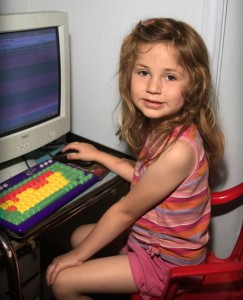From the virtual to the real: what transposition of learning?
Published: 06 October 2023

The digital revolution we are currently experiencing has found numerous applications in the scientific world, and more particularly in the medical field.
Many professionals and individuals have commented on the progress made by children who have used this new teaching method. A number of studies have been carried out to demonstrate how learning in a virtual world can be transposed into the real world. A case in point is the research carried out by Professor Josman of the Laboratory for Innovation in Rehabilitation Technologies at the University of Haifa (Israel).
His team started from the premise that it was absolutely essential to teach autistic children basic safety rules, such as how to cross at a crosswalk. Yet one of the particularities of autism is precisely the difficulty of learning in areas requiring strong interaction with others. Another challenge is that the teaching provided must always be concrete and practical, which poses a problem in the previous example.
Understanding hazards with virtual reality
So Professor Josman and his team came up with the idea of creating a kind of virtual reality to avoid confronting children with real danger. Children aged 7 to 12 tested this learning method for 1 month, working in stages and levels: as the difficulty of the exercise increased, so did the progress of the little subjects, some of whom went from level 2 to level 9.
Verify the transposition of acquired knowledge into the real world
However, it is legitimate to ask to what extent the skills acquired in this virtual world retain their benefit in the real world. To try and answer this question, Professor Josman’s team of scientists took the children out on a real crosswalk after their training (although they took care to regulate the traffic beforehand to avoid taking any risks); the test was conclusive since the children were able to cross the road in complete safety. It’s a good example of the effectiveness of digital tools in helping people with autism, and of how learning can be transposed into the real world.
“Even if the complexity of disability is such that every conclusion must be drawn with caution, there is no doubt that the use of new technologies is constantly opening up concrete prospects for better social inclusion of people with autism.”
Sarah Cherruault, President of Auticiel
Going further: the Social Handy application on tablets
The Social Handy application has been designed to work with everyday situations (in the street, at home, etc.) that require interaction with the world. Thanks to a quiz system, it assesses the user’s knowledge and prepares them to react in a given situation, for example: “when someone says ‘Hello’ to me” and the aim is to find the appropriate action or behavior “I turn my back and walk away” or “I answer ‘Hello'”.
Via a special interface, users can easily add their own quizzes and track their progress.
Since its launch in 2014, the app has been a big hit with educators, psychologists, speech therapists and parents. Eric Greff, specialist atInstitute for Higher Education and Research in Handicap and Special Educational Needs (INS HEA) applications for autism, describes it as “the most advanceda perfect way to practice everyday situationsin its Compendium of applications for tactile tablets for students with autism spectrum disorders.
See also :
- Related article: SOCIAL HANDY, an application for learning to be independent
